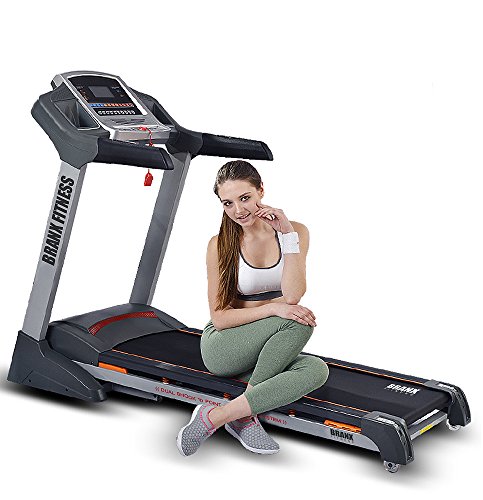10 Quick Tips On What Is A Manual Treadmill
What Is A Manual Treadmill?
In today's fast-paced world, integrating physical fitness into day-to-day routines has actually ended up being necessary. Among the myriad of exercise equipment available, the manual treadmill sticks out for its simplicity, effectiveness, and price. This article delves into what a manual treadmill is, its advantages, and how it compares to its motorized equivalent. Non-Folding Treadmill will likewise respond to some often asked concerns to help you make an educated choice about adding a manual treadmill to your home health club.
What is a Manual Treadmill?
A manual treadmill, unlike a motorized variation, is a self-powered machine that requires users to produce their own momentum. This indicates that the belt moves only when the user walks, jogs, or operates on the machine. Manual treadmills are normally lightweight and portable, making them an appropriate option for home workouts, specifically for those with restricted space.
Secret Features of a Manual Treadmill
Function
Description
Source of power
Powered by the user's movement; no electricity required.
Weight and Size
Usually lighter and compact, permitting easy storage and mobility.
Cost
Usually more cost effective compared to motorized treadmills, making them accessible for budget-conscious customers.
Adjustability
Often includes adjustable incline settings to increase workout strength.
Sturdiness
Developed with less electronic elements, leading to lower threat of malfunctions and breakdowns.
Workout Variety
Enables numerous workout methods, including walking, running, and sprinting, while supplying resistance training through manual effort.
Advantages of a Manual Treadmill
Manual treadmills included numerous unique advantages, appealing to a vast array of physical fitness enthusiasts. Here are some essential advantages:
1. Cost-Effectiveness
Manual treadmills are usually much less expensive than their motorized equivalents. This affordability makes them an attractive choice for those looking to buy physical fitness devices without breaking the bank.
2. Space-Saving Design
Lots of manual treadmills are developed to be compact and lightweight, quickly fitting into little living spaces or home health clubs. Their foldable designs likewise contribute to their space-saving capabilities.
3. Enhanced Walking Form
Because the user manages the treadmill, they can naturally adjust their walking or running gait. This self-regulation can help enhance general kind, lower injury dangers, and improve muscle engagement.
4. Strength Training
Utilizing a manual treadmill needs more effort from the user, causing increased calorie burn and much better muscle strength gradually. Greater resistance settings can also promote cardiovascular endurance.
5. Flexibility
Users can adjust exercise strength by increasing speed or incline, enabling a range of workouts from leisurely strolls to high-intensity intervals. This flexibility keeps workouts fresh and engaging.
6. Eco-Friendly
Manual treadmills do not need electricity, making them an environmentally friendly alternative. They promote sustainability, specifically for those seeking to minimize their carbon footprint.
Manual vs. Motorized Treadmill
While both manual and motorized treadmills have their own sets of advantages, they deal with various needs. Below is a contrast table describing their essential distinctions:
Aspect
Manual Treadmill
Motorized Treadmill
Source of power
User-generated
Electric
Expense
Normally less expensive
More expensive
Area Requirements
Compact and frequently foldable
Larger, more stationary
User Control
Controls speed and momentum
Set speed, user adjusts incline
Consistent Resistance
Varies based upon user effort
Constant resistance
Maintenance
Usually lower upkeep
Needs more upkeep and prospective repairs
In summary, a manual treadmill is a viable option for those seeking an efficient and budget-friendly exercise solution. This self-powered equipment supplies various benefits, consisting of expense savings, portability, and a flexible exercise experience. Offered its growing appeal, numerous individuals are now going with manual treadmills as part of their physical fitness routines.
Frequently Asked Question About Manual Treadmills
1. Do I need to be a skilled runner to utilize a manual treadmill?
No, manual treadmills are suitable for all physical fitness levels. Beginners might start with walking and gradually progress to running as they construct confidence and strength.
2. Can I find a manual treadmill with adjustable incline?
Yes, numerous manual treadmills come geared up with adjustable slopes, permitting users to increase workout intensity as needed.
3. Just how much area do I require for a manual treadmill?
The size requirements vary, however lots of manual treadmills are developed to be compact and can typically be kept in small spaces. Generally, a space of about 6 feet long and 2 feet large need to be sufficient.
4. How can I securely use a manual treadmill?
To use a manual treadmill safely, guarantee that it is on a flat surface area, keep proper posture while walking or running, and begin at a sluggish pace to get comfortable with the devices before increasing speed.
5. What kind of upkeep does a manual treadmill need?
Manual treadmills require minimal upkeep compared to motorized ones. Routine cleansing and inspecting for wear and tear will keep them in great condition.
6. Can I drop weight using a manual treadmill?
Yes, using a manual treadmill can help with weight-loss, as it burns calories through exercise. Integrating constant sessions with a well balanced diet can assist accomplish weight reduction goals.
In conclusion, whether one is looking to supplement their outdoor runs or seeking a practical indoor workout solution, a manual treadmill offers an effective way to remain fit. By understanding its functions and advantages, people can make an informed choice that matches their physical fitness way of life.
